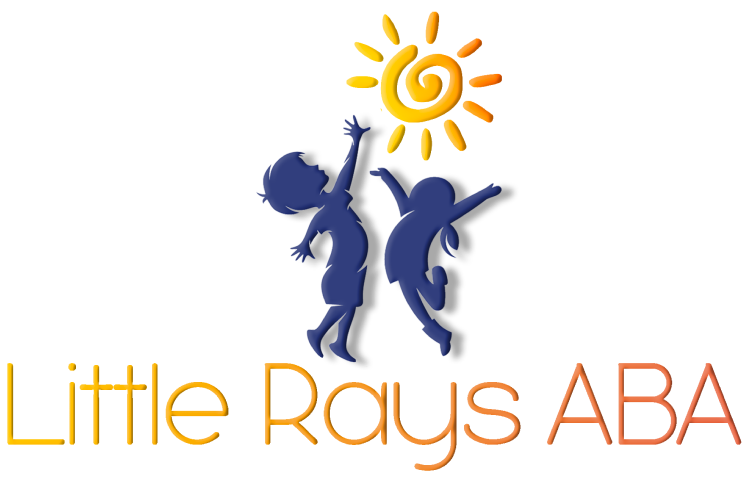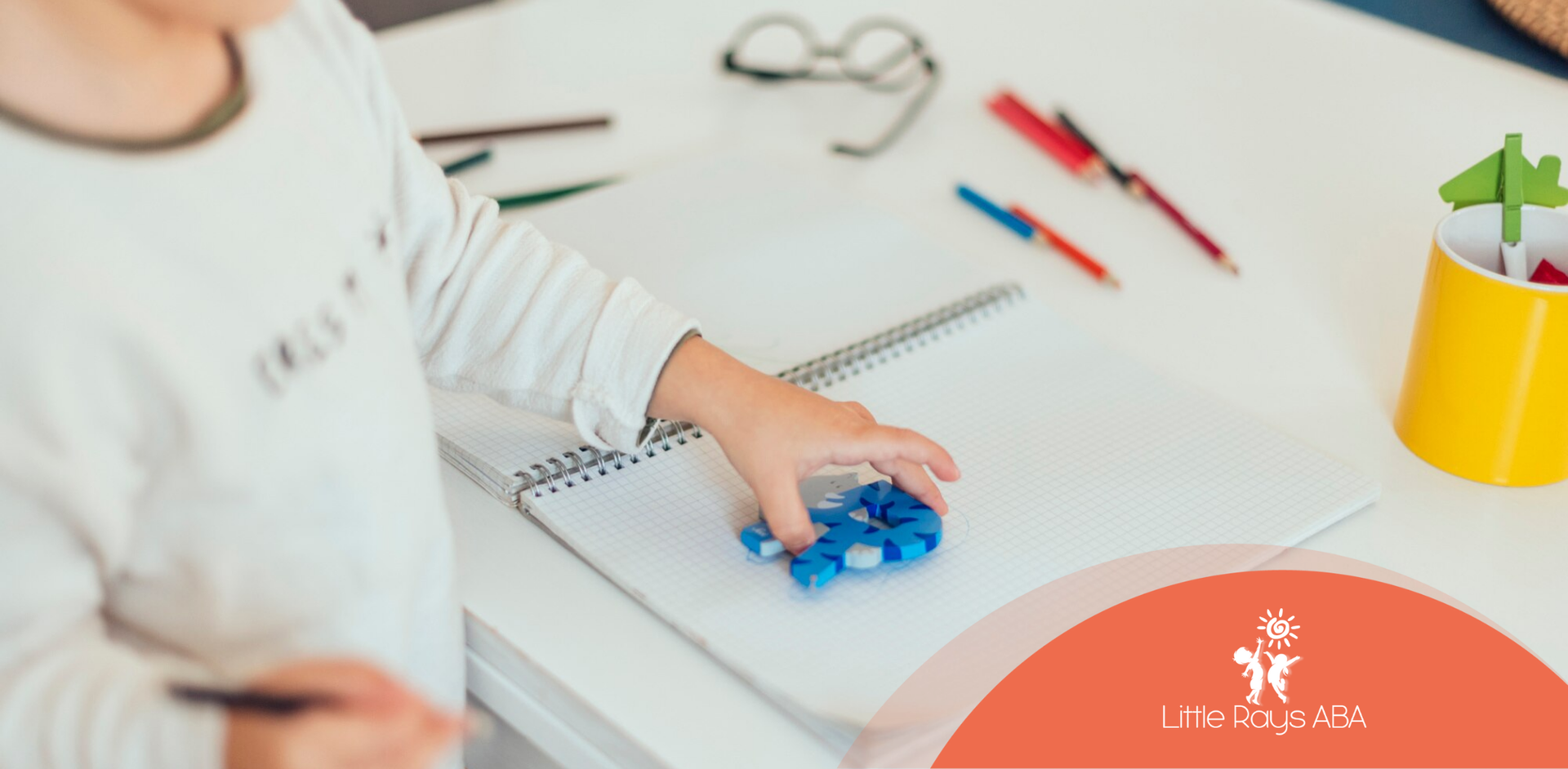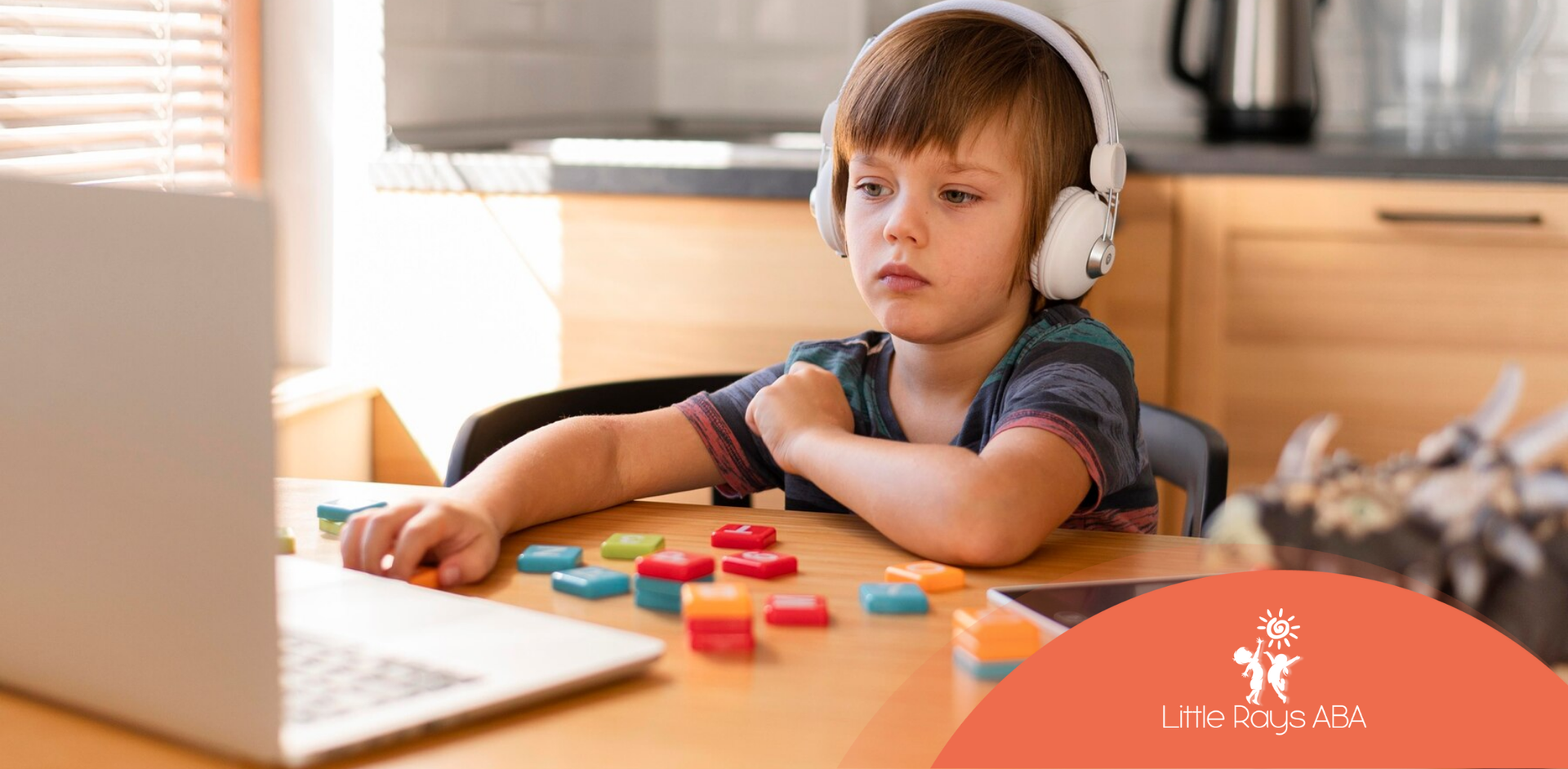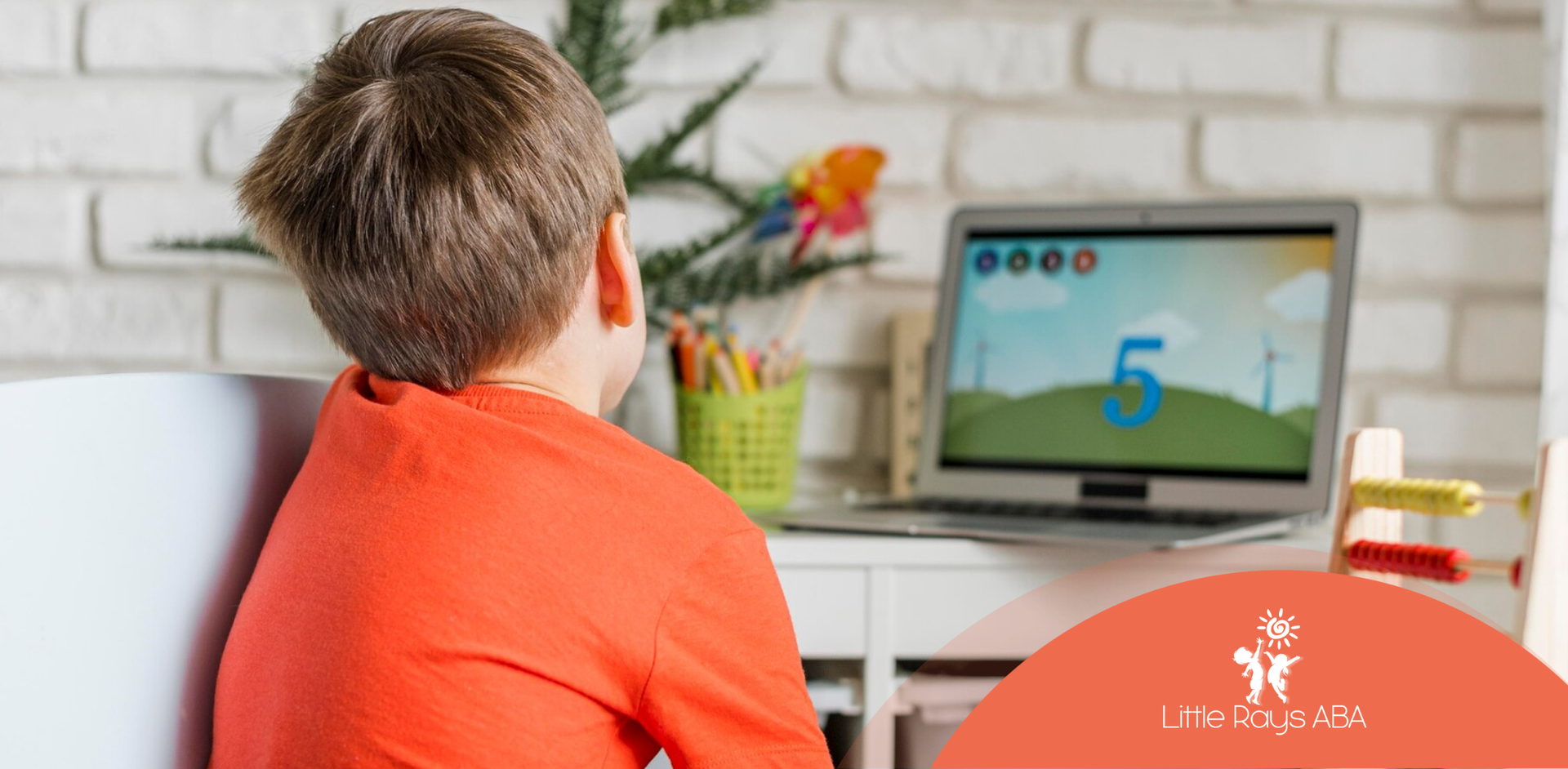As a parent, you want the best for your child—especially when navigating the world of autism and ABA therapy. It’s natural to feel overwhelmed by the sheer number of therapy options and techniques available. However, having the right tools and resources at your disposal can make all the difference in your child’s development.
I remember working with a parent whose child had difficulty with transitions between activities. She was frustrated and unsure how to help him adapt to changes in his routine. After introducing a simple visual schedule and a first-then board, she saw an incredible shift—her child began transitioning between tasks with minimal resistance. That’s the power of the right ABA therapy tools!
In this blog, we’ll explore five essential ABA therapy tools and resources every parent should know, so you can confidently support your child’s progress at home.
Essential ABA Therapy Tools and Resources
ABA therapy, or Applied Behavior Analysis, is a widely recognized therapy for individuals with autism spectrum disorder (ASD). It works by understanding the relationship between behaviors and the environment. For parents, understanding ABA's basics can be incredibly beneficial in supporting their child's development.
Thankfully, various tools and resources are available to help parents navigate the world of ABA therapy. These range from practical tools like visual aids and reward systems to online resources, apps, and support groups.
Incorporating these resources can help create a more structured and supportive environment for children with ASD, leading to improved communication, reduced challenging behaviors, and increased independence.
Tool/Resource 1: Visual Supports
Visual supports are an invaluable tool in ABA therapy, proving particularly beneficial for children with autism who often struggle with verbal communication. They can help make abstract concepts more concrete and understandable for these children.
Incorporating visual supports can ease transitions, reduce anxiety, and promote independence by providing clear expectations and routines. Parents can seamlessly integrate these tools into their daily routines, creating a more predictable and comforting environment for their children.
What are Visual Supports?
Visual supports are any tools that use visual cues to communicate information and enhance understanding, especially for children on the autism spectrum who might face challenges with verbal communication. They can be incredibly beneficial in helping an autistic child grasp routines, expectations, and social situations.
Instead of relying solely on spoken words, visual supports present information in a way that is easily processed and retained by an autistic child. This can be particularly helpful when teaching new skills, explaining routines, and managing challenging behaviors.
Overall, visual supports empower autistic children by providing them with a voice and allowing them to navigate their world confidently and independently.
Types of Visual Supports
Various visual supports cater to the unique needs and learning styles of autistic children. Some commonly used types include:
- Picture Exchange Communication System (PECS): PECS involves using pictures to help children communicate their needs and wants. By exchanging pictures for desired items or activities, children learn to initiate communication and engage in social interactions.
- Social Stories: These short stories present social situations in a structured and understandable way, helping children with autism navigate social interactions and develop appropriate responses.
- Visual Schedules: Visual schedules display daily routines using pictures or words, providing a sense of predictability and reducing anxiety related to transitions.
By incorporating these and other visual supports, parents can create a more supportive learning environment at home, fostering their child's communication and social skills.
Benefits for Parents
Visual supports are not just beneficial for children with autism; they also offer numerous advantages for parents. By incorporating these tools into daily activities, parents can experience a significant difference in their child's behavior and overall well-being.
One key benefit is a reduction in challenging behaviors. When children understand expectations and routines, it minimizes frustration and anxiety, leading to a calmer and more manageable environment for everyone involved. Furthermore, visual supports empower parents to implement ABA principles effectively at home.
Parents can track their child's progress, celebrate small victories, and make adjustments as needed by creating a structured learning environment. This active involvement strengthens the parent-child bond and creates a consistent learning experience between home and therapy sessions.
How to Create and Use Visual Supports at Home
Creating and using visual supports at home doesn't have to be complicated. Simple strategies can be easily implemented with a little creativity. Start by identifying your child's needs and areas where visual supports can be most beneficial.
Use pictures, photos, or drawings to represent daily routines like getting ready for bed or completing chores. The key is to introduce visual supports gradually, ensuring your child understands their meaning. Consistency is key when implementing ABA techniques, so using visual supports should become routine.
Remember that visual supports are not meant to be a permanent solution but rather a stepping stone toward greater independence. Gradually fade their use as your child makes progress and observe the desired behavior changes.
Tool/Resource 2: Positive Reinforcement Strategies
Positive reinforcement is a cornerstone of ABA therapy and involves rewarding desirable behaviors to increase their likelihood of recurring. By focusing on encouragement and positive reinforcement, parents can motivate their children to learn new skills and adopt positive behaviors.
In simpler terms, it's about "catching your child doing something good" and acknowledging their efforts. This approach creates a more positive and supportive learning environment, fostering self-esteem and encouraging progress.
Understanding Positive Reinforcement
Positive reinforcement is a fundamental principle of ABA therapy that involves strengthening a desired behavior by immediately following it with a rewarding consequence. The underlying concept is to make the child associate the behavior with something positive, increasing the chances of them repeating the action.
Reinforcement can take various forms – from verbal praise and high-fives to tangible rewards like stickers or small toys, or even access to preferred activities. However, the critical aspect is to identify what motivates the child and tailor the reinforcement accordingly.
When implemented consistently and paired with a clear understanding of the desired behavior, positive reinforcement can be a powerful tool for parents to encourage positive changes and skill development in their autistic children.
Types of Rewards
Choosing the right reinforcers is crucial for effective positive reinforcement. It's important to recognize that what one child finds rewarding, another might not. Therefore, parents must identify their child's unique interests and preferences to select reinforcers that will truly motivate them.
Here are some examples of reinforcers commonly used in ABA therapy:
- Tangible Reinforcers: Small toys, stickers, bubbles, or anything that the child enjoys physically possessing.
- Social Reinforcers: Praise, high-fives, hugs, or any positive social interaction that the child responds to well.
- Activity Reinforcers: Access to preferred activities such as screen time, outdoor play, or reading a favorite book.
By understanding ABA principles and tailoring the type of reinforcement to their child's needs, parents can make learning more enjoyable and encourage the development of new skills.
Implementing Positive Reinforcement at Home
Incorporating positive reinforcement into everyday routines can significantly impact a child's behavior and learning. Start by identifying specific behaviors you wish to encourage, such as completing chores, using polite language, or trying new foods.
Once you have a target behavior, consistently reward your child immediately after they exhibit the desired action. This immediate feedback helps solidify the connection between the specific behavior and the positive consequence.
Remember that consistency is key in ABA practices. Make positive reinforcement a habit, and you'll likely see improvements in your child's behavior and daily living skills.
Tracking Progress with Reinforcement
Tracking your child's behavior is essential to gauge the effectiveness of positive reinforcement strategies. Maintaining a simple chart or using a notebook to log specific behaviors, the reinforcers used, and the frequency of the behavior can offer valuable insights. This data allows parents to make informed decisions and adjustments as needed.
For example, if you notice a particular behavior is not decreasing despite consistent reinforcement, it might be time to re-evaluate the effectiveness of the chosen reinforcer or explore other ABA techniques.
| Behavior | Reinforcer | Monday | Tuesday | Wednesday | Thursday | Friday |
|---|---|---|---|---|---|---|
| Completing homework | 15 minutes of iPad time | ✅ | ✅ | ❌ | ✅ | ✅ |
| Using polite language | Sticker Chart | ✅ | ✅ | ✅ | ✅ | ✅ |
By actively tracking your child’s behavior and making data-driven decisions, you are setting the stage for greater progress and success in their ABA therapy journey.
Tool/Resource 3: Prompting Techniques
Prompting techniques play a crucial role in ABA therapy by providing children with autism with the necessary support and guidance to learn new skills and complete tasks. These techniques involve providing cues or assistance that encourages the child to engage in the desired behavior.
By using prompts effectively, parents can break down complex tasks into smaller, more manageable steps, making it easier for their children to learn and succeed. This, in turn, boosts the child's confidence and fosters a sense of accomplishment.
What are Prompting Techniques?
Prompting techniques are an essential part of ABA therapy, particularly for children who may need additional support due to developmental delays or learning differences. These techniques provide children with cues or assistance to encourage desired behaviors or responses.
In essence, prompts act as a bridge between the task and the child's current skill level, helping them learn and master new abilities. These techniques are not intended to make a child dependent on assistance but rather to support their learning and independence.
Successfully using prompting techniques within ABA therapy requires a deep understanding of the child's abilities, patience, and the gradual fading of prompts as the child progresses.
Types of Prompts
Various prompting strategies are employed in ABA therapy, and understanding the different types can help tailor the approach.
Here are a few examples of commonly used prompts:
- Verbal Prompts: These involve spoken words or phrases that guide the child toward the correct response, such as asking, "What color is this?" while pointing to a red object.
- Physical Prompts: As the name suggests, physical prompts involve physically guiding the child through the desired action, like helping them place a puzzle piece correctly.
- Gestural Prompts: These prompts use gestures like pointing or nodding to direct the child's attention or indicate the expected action.
The type of prompt used often depends on the complexity of the task, the child’s individual needs, and the specific goals outlined in the ABA program.
Regardless of the chosen prompt, the goal remains the same in discrete trial training and other ABA implementations: to encourage independence and gradually reduce the level of assistance needed.
Fading Prompts Over Time
Fading prompts is a crucial aspect of prompting techniques in ABA therapy. It involves systematically reducing the level of assistance provided to the child as they make progress and demonstrate mastery of the skill.
The idea is to prevent the child from becoming overly reliant on prompts and instead encourage independent performance. Fading prompts must be done gradually, ensuring the child can maintain their success rate without feeling overwhelmed or discouraged.
Patience is vital throughout this process, as each child learns at their own pace. By adhering to ABA principles and tailoring the fading process to your child's individual needs, you've come a long way in supporting their path towards independence and achieving their full potential.
Practical Examples for Parents
Integrating prompting techniques into daily routines can seem daunting, but with the proper parent training, it can easily become second nature. Start by incorporating simple prompts during everyday activities like getting dressed, brushing teeth, or putting away toys.
For instance, if you're teaching your child to put on their shoes, provide a verbal prompt, "Remember to put your shoes on," followed by a gestural prompt, pointing towards the shoes. As they grasp the task, gradually fade the prompts until they can do it independently.
By consistently practicing ABA techniques and integrating them into daily routines, parents can create a supportive environment for their children to learn, grow, and thrive.
Tool/Resource 4: Online Resources and Apps
The digital age offers a wealth of information and support for parents navigating the world of ABA therapy. Many reputable websites and apps provide valuable resources such as educational materials, activity ideas, and communication tools.
From interactive learning games designed to enhance communication skills to apps that track behavior and progress, these resources can be a game-changer for parents seeking accessible and engaging ways to supplement their child's therapy. Additionally, online forums and communities offer parents a platform to connect and receive support.
Overview of Online Resources
The internet is an invaluable tool for parents seeking guidance on ABA therapy. From educational websites to virtual support groups, there are countless online resources that provide expert insights, evidence-based strategies, and community support.
- Websites & Blogs: Platforms like Autism Speaks, the Association for Science in Autism Treatment (ASAT), and AppliedBehaviorAnalysisEdu.org offer research-backed articles, guides, and updates on ABA therapy.
- Online Support Groups: Social media groups and forums such as those on Facebook or Reddit connect parents with others navigating similar challenges, providing encouragement and shared experiences.
- Webinars & Online Courses: Many ABA professionals and organizations host free or affordable webinars, teaching practical strategies parents can implement at home.
By leveraging these online resources, parents can stay informed, feel supported, and implement effective techniques to help their child progress.
Recommended ABA Apps for Parents
Technology has made ABA therapy more accessible than ever. There are numerous apps designed to help parents track their child’s progress, reinforce positive behaviors, and support learning. Here are a few must-try apps:
- ABA Flashcards & Games – A great tool for reinforcing language and communication skills through interactive visuals.
- First-Then Visual Schedule – Helps children with autism understand daily routines and transitions using simple, customizable visual schedules.
- TallyFlex – Allows parents to track behavior data, monitor progress, and share information with therapists.
- Proloquo2Go – A widely used augmentative and alternative communication (AAC) app that helps nonverbal children express themselves.
- Choiceworks – Supports emotional regulation and independence by helping children understand tasks and expectations.
Benefits of Using Technology
Integrating technology into ABA therapy offers numerous benefits for both parents and children:
- Accessibility: Online tools and apps provide ABA strategies at your fingertips, making it easier to practice skills anytime, anywhere.
- Engagement: Interactive learning apps and digital resources can make therapy sessions more enjoyable and motivating for children.
- Data Tracking: Many ABA apps allow parents to track progress, log behaviors, and analyze patterns, helping therapists tailor interventions more effectively.
- Consistency: By using apps and digital tools, parents can maintain consistency in implementing ABA techniques between therapy sessions.
- Parental Support: Technology offers access to expert advice, webinars, and peer support groups, reducing the feeling of isolation many parents experience.
By embracing digital tools, parents can enhance their child’s learning experience while staying organized and informed throughout their ABA therapy journey.
Tool/Resource 5: Support Groups and Community Resources
Support groups and community resources are invaluable for parents raising children with autism. These groups provide a safe and understanding space to share experiences, exchange advice, and connect with other families facing similar challenges.
Local organizations and community centers often offer workshops, seminars, and parent training programs, providing valuable insights into ABA therapy and equipping parents with tools and strategies to support their children effectively.
Importance of Community Support
Navigating the world of autism can be both challenging and rewarding for parents of autistic children. Having a supportive community can make all the difference in providing parents with the emotional, practical, and informational resources they need to thrive.
Community support groups offer a safe and non-judgmental space for parents of autistic children to share experiences, exchange coping strategies, and find comfort in knowing they're not alone. Being part of a community fosters a sense of belonging and reduces feelings of isolation that parents might experience on their journey.
Furthermore, these support groups often extend beyond emotional support and become hubs for advocacy, sharing resources, and accessing valuable information about ABA therapy, educational services, and other relevant topics.
Finding Local Support Groups
Luckily for parents and families, there are many local support groups across the country. Finding these locally available organizations can offer a lifeline for parents seeking guidance and connection on their ABA therapy journey.
Start by checking with your child's therapist or ABA provider, as they often have information about local support groups. Professional associations such as the Autism Society of America and Autism Speaks also maintain directories of local chapters and support resources.
Additionally, online platforms and social media groups can be valuable sources for finding and connecting with local support groups and other families in the field of ABA. Embrace these communities, as they can provide a wealth of knowledge, understanding, and encouragement.
Educational Workshops and Seminars
Educational workshops and seminars offer invaluable insights into autism spectrum disorder and evidence-based interventions like ABA therapy. These sessions often feature experts in the field, such as certified behavior analysts, educators, and researchers, who provide the latest information on ASD, ABA techniques, and strategies for promoting development.
Organizations like Autism Speaks and the US Surgeon General's office on autism provide resources for locating workshops and conferences. These events benefit parents by providing them with a deeper understanding of their child's needs, empowering them to make informed decisions about their care.
Attending workshops and seminars is an investment in your child's future. It equips you with the knowledge and tools to navigate challenges, advocate for your child's needs, and maximize their potential.
Conclusion
In conclusion, these top 5 ABA therapy tools and resources provide valuable support for parents navigating the journey of caring for children with autism.
Visual supports, positive reinforcement strategies, prompting techniques, online resources, and community support all play crucial roles in enhancing communication, behavior management, and overall well-being. By incorporating these tools into daily routines, parents can create a structured and nurturing environment that fosters growth and development.
Looking for professional guidance on implementing ABA techniques at home? Schedule a consultation with Little Rays ABA! Let’s work together to create a brighter future for your child.
Frequently Asked Questions
How can visual supports improve communication for children with autism?
For children with autism spectrum disorder (ASD), visual supports can significantly improve communication. Visual aids compensate for communication difficulties often associated with symptoms of autism by providing alternative ways to understand and express themselves, ultimately enhancing their ability to engage in ABA services effectively.
What are some examples of positive reinforcement that can be used at home?
Positive reinforcement is about acknowledging and rewarding desired behaviors to encourage repetition. Examples of effective reinforcers include verbal praise ("Amazing job!"), small toys or treats, access to preferred activities, and even high-fives or hugs. Remember consistency is key with these aba techniques!
When should parents start fading prompts?
Fading prompts should begin when an autistic child demonstrates progress in ABA therapy. When they consistently perform a task with less assistance, it's time to gradually reduce prompts, following aba principles. Patience and observation are paramount to determining the appropriate pace for fading prompts.
Sources:
- https://www.autismspeaks.org/tool-kit/parents-guide-autism
- https://autism-clinic.ua.edu/helpful-apps-and-websites/
- https://www.autismparentingmagazine.com/smart-tech-ideas-for-parents/
- https://autismspectrumnews.org/technology-safety-guide-for-parents-of-children-with-autism/
- https://pmc.ncbi.nlm.nih.gov/articles/PMC8273251/
- https://pmc.ncbi.nlm.nih.gov/articles/PMC11017782/
Unlock Your Child's Potential with Expert ABA Therapy!
At Little Rays ABA, we provide compassionate, evidence-based ABA therapy to help children with autism thrive. Our personalized approach fosters growth in communication, social skills, and independence.
Get In Touch With Us Today to Get Started With ABA Therapy!
Related Posts
MENU
GET IN TOUCH
7117 San Salvador Dr Boca Raton, FL 33433
3200 Collins Ave Miami Beach, FL 33140





